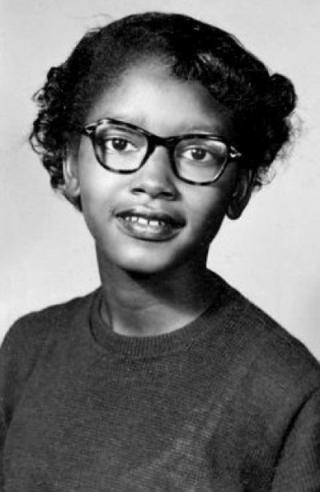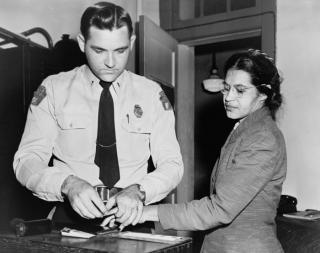Montgomery Bus Boycott

Claudette Colvin at age 13, April 20, 1953.
In 1955, Claudette Colvin, a high school student in Montgomery, Alabama boarded the city bus. Her ride went without incident, until she was asked to move to the back of the bus and give her seat to a white passenger. She refused replying to the bus driver that it was her “constitutional right” to stay seated. For her refusal, Colvin was removed from the bus and arrested.
A few months later, Rosa Parks, another Montgomery resident and a member of the National Association for the Advancement of Colored People (NAACP), was traveling home on the bus. When Parks was asked to move to the back, she refused, and like Colvin she was arrested.
Colvin and Parks along with other early protestors sparked a yearlong boycott of the Montgomery bus system. The boycott culminated in the desegregation of public transportation in Alabama and throughout the country. Although the movement is best known for catapulting the career of a young reverend, Dr. Martin Luther King, Jr., the boycott was largely planned and executed by African American women. The Women’s Political Council (WPC) was an organization of black women active in anti-segregation activities and politics. It was largely responsible for publicizing the Montgomery Bus Boycott.

Jo Ann Robinson was the president of WPC and a teacher at Alabama State College when the boycott started. She recognized the inequality for African Americans on public transportation, but was unable to gain support for a large-scale boycott. With the arrest of Parks, Robinson seized the opportunity to protest the bus system's systematic discrimination and pushed the WPC to get to work.
One of WPC’s many jobs was to publicize the boycott. This was done by printing leaflets and passing them out around the city. Robinson also reached out to other organizations like the NAACP and the Montgomery Improvement Association. Women not only represented leadership in the movement, but they also handled the day to day planning for protesters. They set up a car pool for women who worked long distances from their homes. Despite constant threats of violence, the boycott lasted for almost a year. On December 20, 1956, the Supreme Court upheld a lower court decision that stated it was unconstitutional to discriminate on public transit. With the success of the Montgomery Bus Boycott, Civil Rights activists turned their attention to the integration of public schools.
By Arlisha Norwood, NWHM Fellow
